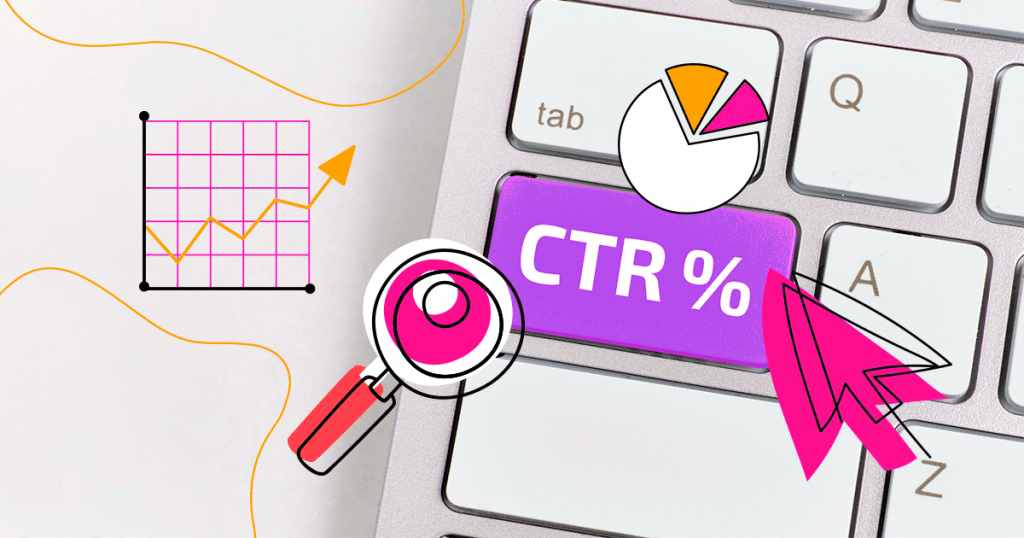Boost Your Organization Presence with Our CTR Manipulation Service
Boost Your Organization Presence with Our CTR Manipulation Service
Blog Article
Enhancing Organic Click-Through Fees With CTR Manipulation
The optimization of natural click-through prices (CTR) is a nuanced venture that pivots on recognizing both customer psychology and efficient material presentation. The landscape is rife with misunderstandings and oversimplifications about what truly drives CTR.
Recognizing Click-Through Fees
Recognizing click-through prices (CTR) is crucial for reviewing the performance of internet marketing techniques. CTR gauges the percent of individuals who click on a details web link or ad compared to the total number of customers that view it. A greater CTR suggests that the content is involving and relevant to the target audience, while a reduced CTR may signal a demand for optimization.
To determine CTR, divide the variety of clicks by the variety of perceptions and multiply by 100. For example, if an advertisement receives 300 clicks out of 10,000 impacts, the CTR would be 3%. This statistics is crucial for assessing different components of electronic advertising, consisting of search engine optimization (SEARCH ENGINE OPTIMIZATION), email projects, and social networks advertising and marketing.
Furthermore, evaluating CTR aids marketing experts identify which approaches yield the ideal outcomes and which call for refinement. By concentrating on improving CTR, services can enhance their material's exposure and efficiency, bring about boosted traffic and prospective conversions. Recognizing the nuances of CTR is fundamental for any type of marketer aiming to enhance their on-line presence and make best use of return on investment (ROI)

The Psychology of Customer Habits
User habits is significantly affected by psychological variables that dictate just how individuals engage with online content. Recognizing these elements is essential for enhancing click-through prices (CTR) in organic search outcomes.
Psychological reactions likewise considerably influence customer actions. Web content that reverberates emotionally can set off a sense of urgency or inquisitiveness, prompting customers to click. Additionally, social evidence-- such as individual testimonials or ratings-- can improve depend on and urge engagement, as people often seek to the behaviors of others to inform their own choices.
In addition, the principle of scarcity can drive clicks - CTR Manipulation Service. Limited-time offers or unique web content create a worry of losing out (FOMO), engaging customers to act promptly. Understanding these psychological motorists allows marketers to create more compelling content that resonates with their target audience
Efficient CTR Control Methods
Leveraging emotional understandings can dramatically boost click-through prices (CTR) via targeted adjustment strategies. Among one of the most efficient techniques is making use of compelling headlines that evoke curiosity or urgency. Phrasing titles as questions or incorporating numbers can bring in even more interest, triggering individuals to click.
One more technique involves optimizing meta summaries to develop a sense of significance and immediacy. By clearly outlining the benefits or solutions given in the web content, you can involve potential viewers and persuade them to click. In addition, utilizing power words-- such as "unique," "verified," or "totally free"-- can enhance the allure of your material.
Visual elements additionally play a critical function. Incorporating eye-catching photos or thumbnails can draw click here for info users in and boost CTR. A/B testing various visuals can assist recognize which pictures resonate ideal with your audience.
Lastly, ensuring that your content guarantees deliverable value causes higher CTR. When customers perceive that clicking will certainly provide them with purposeful insights or remedies, they are much more most likely to engage. By utilizing these strategies thoughtfully, marketers can successfully manipulate CTR to their advantage while keeping ethical requirements.
Usual Myths Regarding CTR
Several misunderstandings surround click-through rates (CTR) that can lead online marketers to make illinformed choices. One prevalent misconception is that a higher CTR constantly translates to far better efficiency. While a high CTR suggests that more individuals are clicking, it does not ensure sales or conversions. Ultimately, the efficiency of website traffic relies on the quality of the landing web page and the importance of the material.
An additional common belief is that CTR is a separated metric. In truth, CTR needs to be examined in combination with other performance indications, such as bounce price and conversion price, to get an alternative view of project success.
In addition, some marketing experts think that enhancing for CTR alone is adequate. Focusing exclusively on CTR can lead to clickbait methods that may attract clicks yet fail to involve users meaningfully. CTR Manipulation. This technique can harm brand credibility and cause reduced retention rates
Last but not least, there is a notion that CTR approaches are generally effective. The reality is that optimal CTR methods can vary significantly throughout industries and target market, requiring customized methods for various market segments. Recognizing these myths is critical for establishing reliable CTR techniques that straighten with overarching advertising objectives.
Gauging CTR Success
Although high click-through rates (CTR) can show successful involvement with material, gauging their true success needs a thorough analysis of a number of variables. It is crucial to understand the context in which the CTR is accomplished. A high CTR site web on a deceptive title might not convert to meaningful engagement or conversions, eventually mirroring inadequately on the brand's reliability.
Second, examining the resource of traffic is essential. Organic web traffic from online search engine can symbolize a robust web content method, while clicks from unnecessary resources may suggest a lack of targeting. In addition, measuring the subsequent user behavior is important; evaluating metrics such as bounce rate, time invested on web page, and conversion rates can offer deeper insights into the quality of the engagement launched by the CTR.

Verdict

The optimization of organic click-through prices (CTR) is a nuanced venture that pivots on comprehending both user psychology and efficient content presentation. CTR gauges the percentage of customers who click on a details link or promotion compared to the complete number of users that see it. A greater CTR suggests that the web content is engaging and appropriate to the target audience, while a lower CTR may signify a need for optimization.
Concentrating specifically on CTR can lead to clickbait tactics that may bring in clicks but stop working to involve users meaningfully. In addition, measuring the succeeding customer behavior is crucial; evaluating metrics such as bounce price, time spent on page, and conversion prices can provide deeper understandings right into the quality of the interaction launched by view website the CTR.
Report this page